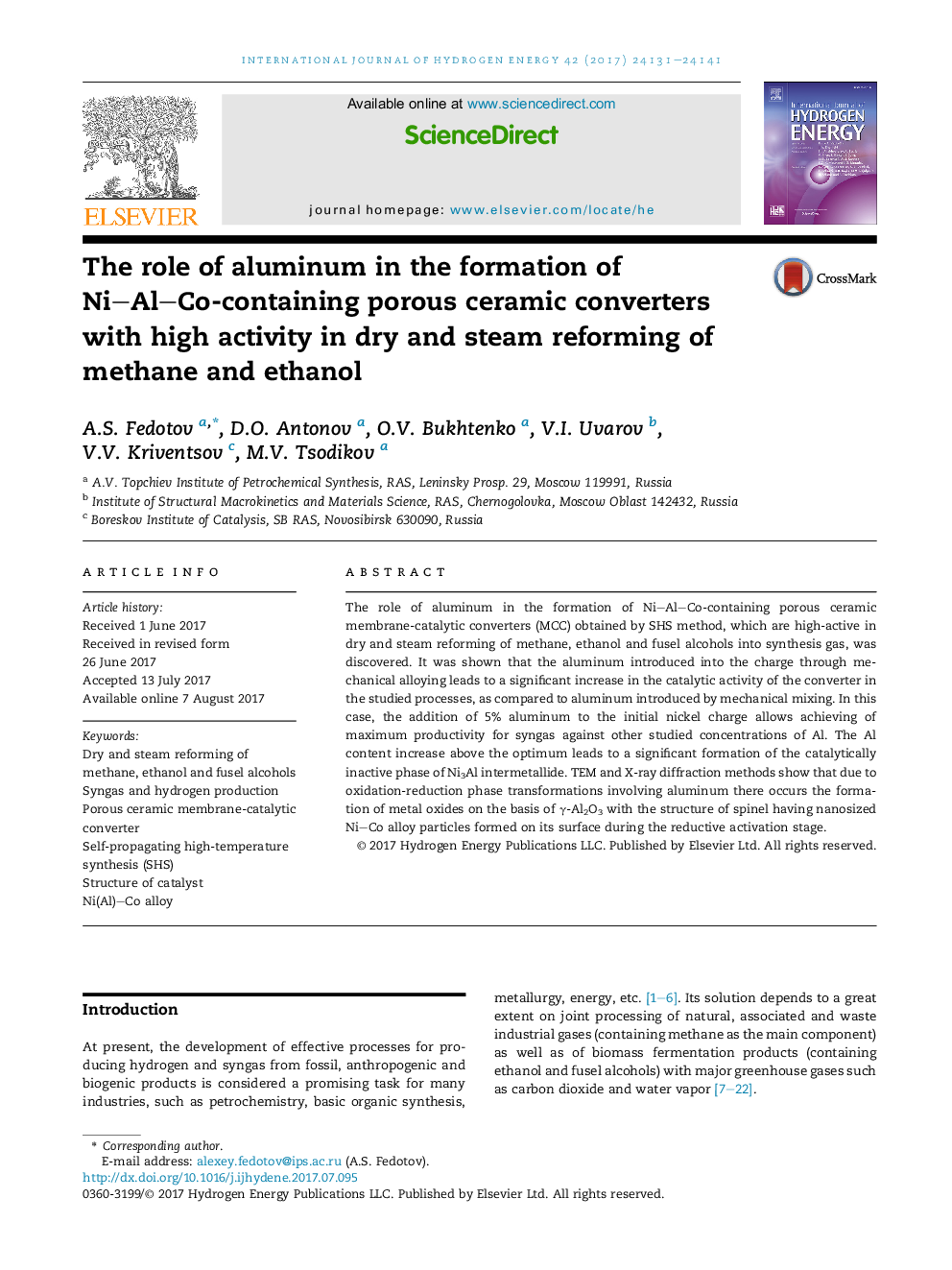| Article ID | Journal | Published Year | Pages | File Type |
|---|---|---|---|---|
| 5145202 | International Journal of Hydrogen Energy | 2017 | 11 Pages |
â¢Ni-Al-Co porous ceramic catalytic converters were obtained by SHS method.â¢The converters are high-active in dry and steam reforming of organic substrates.â¢The role of Al in formation of the converters was discovered.â¢The addition of 5% Al to Ni charge leads to maximum syngas productivity.â¢Ni-Co alloy particles were formed on γ-Al2O3 surface during SHS and activation.
The role of aluminum in the formation of Ni-Al-Co-containing porous ceramic membrane-catalytic converters (MCC) obtained by SHS method, which are high-active in dry and steam reforming of methane, ethanol and fusel alcohols into synthesis gas, was discovered. It was shown that the aluminum introduced into the charge through mechanical alloying leads to a significant increase in the catalytic activity of the converter in the studied processes, as compared to aluminum introduced by mechanical mixing. In this case, the addition of 5% aluminum to the initial nickel charge allows achieving of maximum productivity for syngas against other studied concentrations of Al. The Al content increase above the optimum leads to a significant formation of the catalytically inactive phase of Ni3Al intermetallide. TEM and X-ray diffraction methods show that due to oxidation-reduction phase transformations involving aluminum there occurs the formation of metal oxides on the basis of γ-Al2O3 with the structure of spinel having nanosized Ni-Co alloy particles formed on its surface during the reductive activation stage.
